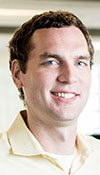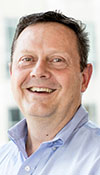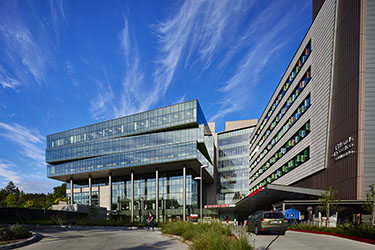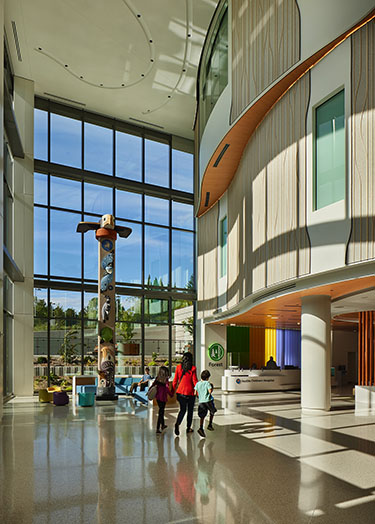|
Subscribe / Renew |
|
|
Contact Us |
|
| ► Subscribe to our Free Weekly Newsletter | |
| home | Welcome, sign in or click here to subscribe. | login |
Construction
| |
 |
May 11, 2023
‘Supersized’ team finds success at Seattle Children’s Forest B
Coughlin Porter Lundeen

Malaspino
|

Savage
|
Seattle Children’s provides advanced pediatric research and treatments for patients from Washington, Alaska, Montana and Idaho, the largest region of any children’s hospital in the country. As families travel in, Forest B is the new space through which many patient families enter. And what a space it is. The eight-story diagnostic and treatment facility is beautiful, functional, and full of thoughtful details and experience-driven designs. It’s clear that patient care is at the center.
To create such a successful facility, the project team overachieved in the categories regularly challenging to health care projects, including collaborating as a supersized project team, working within an occupied health care campus, and achieving aggressive sustainability and seismic resiliency goals.
FULL TEAM EFFORT
With large projects, come large project teams. And high stakes. Led by ZGF (architecture), Sellen (construction), and Coughlin Porter Lundeen (structural and civil engineering), the Forest B addition is the second phase of a 1 million-square-foot campus expansion. In addition to understanding the hospital’s big picture vision, it was important to align against the shared project goals and key questions upfront. How will we provide the best-possible environment for all? How will designs support transformative care? How can we make these state-of-the-art spaces even more functional and streamlined for doctors, surgeons, nurses and staff? And ultimately, how can we best serve families and children during their journey at Seattle Children’s?
Answering these questions, and creating this 310,000-square-foot facility, was truly a team effort. Forest B includes eight new operating rooms, 20 new patient beds, outpatient and clinical space for the Cancer and Blood Disorders Center (CBDC), two new catheterization labs, 3T MRI machines, an outpatient infusion center, pharmacies, labs and support spaces, and even a new rooftop helipad for emergency access.
And every inch of it was shaped by those who use it each day: care teams, patients and their families.
Seattle Children’s and ZGF were determined to involve all parties as designs took shape, honoring the needs and listening to the perspectives of those who would be working there every day.
“The design of Forest B from day one involved not only architects, but conversations with workforce members — and, most importantly, families. This was an opportunity to start from the ground up and build something that was entirely designed around the patient-family experience,” said Mandy Hansen, senior director of Facility Planning, Design and Construction at Seattle Children’s.
For the design team, this meant establishing an off-site “workshop” space (a warehouse in Ballard) where the team, the contractor and hospital stakeholders could come together. There, designs were reviewed in real time, and developed via true collaboration. Cardboard mockups were constructed in the warehouse so medical staff could interact with the proposed design and layout. A large conference room hosted frequent design meetings. Decisions were tracked using the (Toyota) A3 process, allowing for planning, problem resolution, and knowledge-sharing to happen quickly and be visible to all.
Both the shell-and-core and TI designs were born from this collaborative environment, impacting the final structural, architectural, MEP and medical systems throughout the building.
In addition to the hospital staff, patients and families contributed to design workshops, helping the design team understand their needs at each step of their journey and visit. Designs attempt to provide a comfortable environment and provide the best-possible experience, considering everything from ease of navigation and playful, inspiring artwork, to carefully created waiting and respite spaces.
OCCUPIED CAMPUS
In development for the past 70 years, the Seattle Children’s campus continues to grow and evolve. Forest B occupies a large portion of the remaining developable space on the campus, as allowed in the current city-approved Major Institution Master Plan (MIMP).
Navigating the logistics, magnitude, and complexities of an occupied health care campus can be likened to a dance. But while we’d like a ballroom to do this particular number, we were allotted a postage stamp. Working within the constraints of the site is a common project challenge, but here, the constraints were extreme. Not only is the site extremely constrained, but it’s situated in the quiet Laurelhurst neighborhood, where builds take extra logistics as teams respectfully work with the neighbors. Additionally, as the primary 24/7 emergency pediatric facility for the region, project teams must work around occupancy. Noise control, dust control and vibration control for all construction activities had to be taken into account as part of the design plan.
Keeping a building operational, and in particular a hospital, presents a complicated puzzle, and nowhere is this more evident than in the Rubik’s cube of civil plans. Traffic, operational utilities, and civil details present significant challenges. Some of Forest B’s included a storm line in the footprint of the new building (which required a complicated reroute), the widening of Helen Lane (displaced Seattle Children’s shuttles needed a temporary home), and a temporary emergency drop-off (shifting ambulances to a temporary location during construction).
Coordinating the temporary and permanent drop-offs was especially complicated. The window for the ambulance relocation, moving them from a temporary drop-off location to the permanent location, was only a matter of hours. And the transition from the two conditions came down to inches. Elevations of the proposed drive and temporary drop-off were within a few inches of one another to minimize both earthwork and downtime during the swap. The civil team closely aligned grades and minimized work during the transition, and it was a successful transfer!
SUPERIOR SEISMIC STANDARDS
Each building is unique and seismic components fall on a spectrum, but in case of a seismic event, even a very large one, Forest B is engineered to continue occupancy, and remain up and running with minimal service disruption.
Seattle Children’s began expanding the west side of the campus with Building Hope in 2012. Working with Children’s leadership team, Coughlin Porter Lundeen Founding Principal Terry Lundeen helped drive the decision to provide more predictable seismic behavior for the new inpatient bed tower. The idea was to voluntarily implement more robust seismic performance criteria via California health care standards (formerly OSHPD, currently Department of Health Care Access and Information or HCAI). Recent earthquakes around the world had shown that hospital structures tended to perform well, but it was the non-structural components that caused the most significant damage and facility downtime.
The design of Forest B retained the seismic resiliency philosophy of Building Hope in all aspects of the design. The goal? Provide an enhanced performance design that yields a building that not only withstands a large seismic event, but maintains the integrity of contents, and allows for an “immediate occupancy” design level. Structurally, non-linear analysis was used to enhance the lateral system behavior and identify and upgrade any potential weak spots.
Architecturally, the exterior cladding systems, including the curtain wall glazing, were designed to allow for inter-story seismic movements. A “rubber band” weatherproof system at each story within the steel stud-backed cladding allows for significant independent floor movements, while keeping the exterior watertight. Similar to the exterior cladding systems, the interior partition walls were designed and detailed to allow for building movements, minimizing the need for post-earthquake repairs.
The HCAI process is not inherent in Washington’s codes, so the team implemented a specifications-based comprehensive procedure for the design and construction of all non-structural components, including mechanical, electrical, plumbing, and medical equipment. The design and construction process is rigorous, as every component rises to the same level of performance. All systems design, calculations and shop drawings were engineered by subcontractors and vendors and then reviewed and approved by Coughlin Porter Lundeen prior to field installation. Full-time special inspection ensured conformance to the construction documents.
Implementing HCAI criteria and ultimately raising a building’s standard beyond local code requirements is relatively low-cost, but extremely high benefit. And in such a critical facility as a children’s hospital, the value of resiliency cannot be understated.
Seattle Children’s Forest B is an exceptional project and an example of overachievement in the health care market. As the campus continues to evolve, the integrated design allows for future flexibility and additional phases. From stakeholder collaboration and end-user input to management of an occupied campus and seismic and sustainability achievement, Forest B anchors Seattle Children’s hospital campus and provides a new safe, easy way to enter the hospital to receive care.
Kyle Malaspino is a civil associate principal at Coughlin Porter Lundeen. He supports some of the firm’s largest and most complex projects, and is an expert in navigating city of Seattle permitting and issues associated with dense urban sites. Steve J. Savage is a structural associate at the firm. He has assisted with campus expansion and upgrades at Seattle Children’s for over two decades.
Other Stories:
- Why Seattle has become a hotbed for life sciences
- New chapter for life sciences starts in the U District
- Tepid appetite for local lab space continues
- What does it take to convert offices to biotech lab space?
- Best practices for successful outcomes to complex health care projects
- Wellness nestles in the trees at The Evergreen State College
- Transforming the care model in the Rogue Valley
- The evolution of science: trends affecting the science workplace
- Considerations for successful adaptive reuse projects




